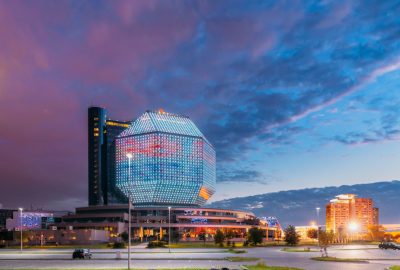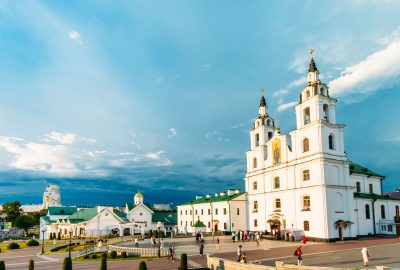Originating from Central Europe myself, I have always considered Belarus to be one of those undeveloped post-soviet countries, still stuck in the reformatory limbo. Imagine my disbelief when I realized they’re years ahead of Poland, and European values are treasured and cultivated in cities like Minsk. My university professor organized a weekend trip to the Belarusian capital and the first thing that struck me was: how do they have so many Fanta flavours?! It was puzzling, how far they were ahead those days while till today Belarus is still a dictatorship. There’s the Independence Square in Minsk with government buildings and a statue of Lenin, tourists are forbidden to take photos there. “Independence Square” my ass. Communist symbolism is everywhere, statues, obelisks, sickle and hammer is a common theme. I admire that they’re preserving their history, contrary to most countries that do all within their power to get rid of any remnants of painful past. Having said that: let me be clear I have no sympathy at all towards totalitarian efforts. The famous KGB building in Minsk is still operational, and an urban legend claims there are some shady deals going down under that roof.
Belarus is a land of contradictions. People often work for less than €1 per hour and struggle to make ends meet. Yet the capital is bursting with boutiques, five-star restaurants, and enormous shopping malls. Some are happy with how their life turned out, some aren’t, but they’re all very welcoming towards tourists. Belarusians are educated and effortlessly communicate in different languages. The first thing that strikes all visitors is how clean and orderly everything is: the streets are spotless, the grass is trimmed and crime is non-existent. Belarusians rebuilt Minsk after the Second World War, and it appears they want to keep it as pristine as possible. Everything is cheap, if you compare it to western countries: food from omnipresent food-trucks rarely costs more than €2 per serving. Locals are open to trying new things. The influx of western cuisine and fast food is something new for Belarusians, who gladly sink their teeth in juicy burgers and hot-dogs.
Tourists, however, go above and beyond to try traditional specialties passed down by babushkas. Potato pancakes (draniki) are my favourite dish ever; they’re usually eaten with sugar or meat sauce, but take my advice and try them with sour cream. Bliny are another type of pancakes in the region, my uncle used to make those, we used to eat them either with butter or with pork ribs in cumin sauce. All that stuff appears in Russian and Polish cuisine, Belarus is, after all, located between those two countries. Kielbasa, pierogis, delicious soups, cured meats, all the good stuff that the rest of the world is falling in love with.
Try the restaurant Belaruskaya Karchma (Belarusian Inn) in Ozertso, outside of Minsk. There’s an authentic folk museum; a living and breathing village where you witness how people used to live in Belarus hundreds of years ago. Belozhevskaya Pushcha National Park is further to the southwest, home of the European bison and one of the last primordial forests left in the world. They are infamously butchered on the Polish side by a halfwit government.





VERY INTERESTING. I CERTAINLY WOULD LIKE TO VISIT BELARUS.